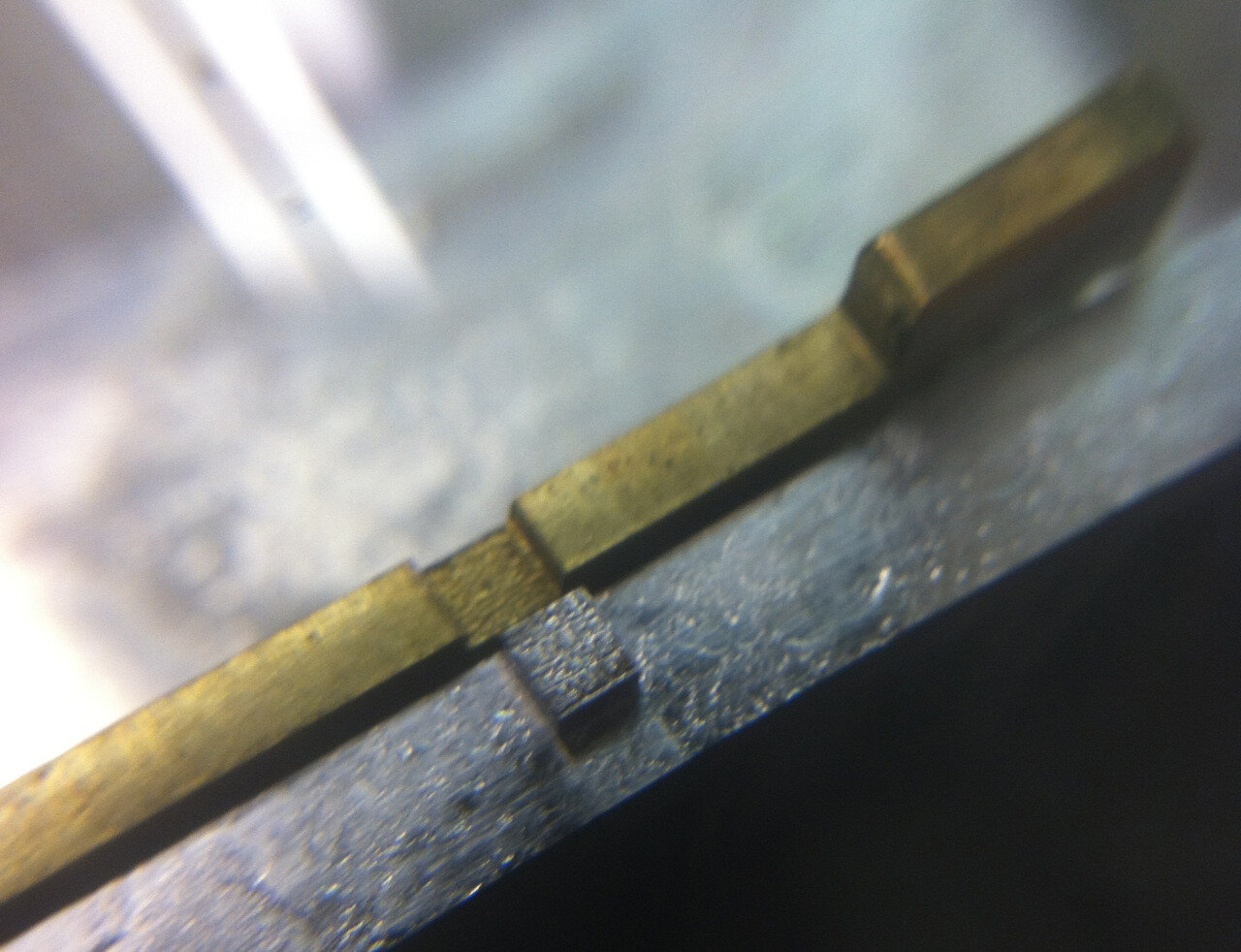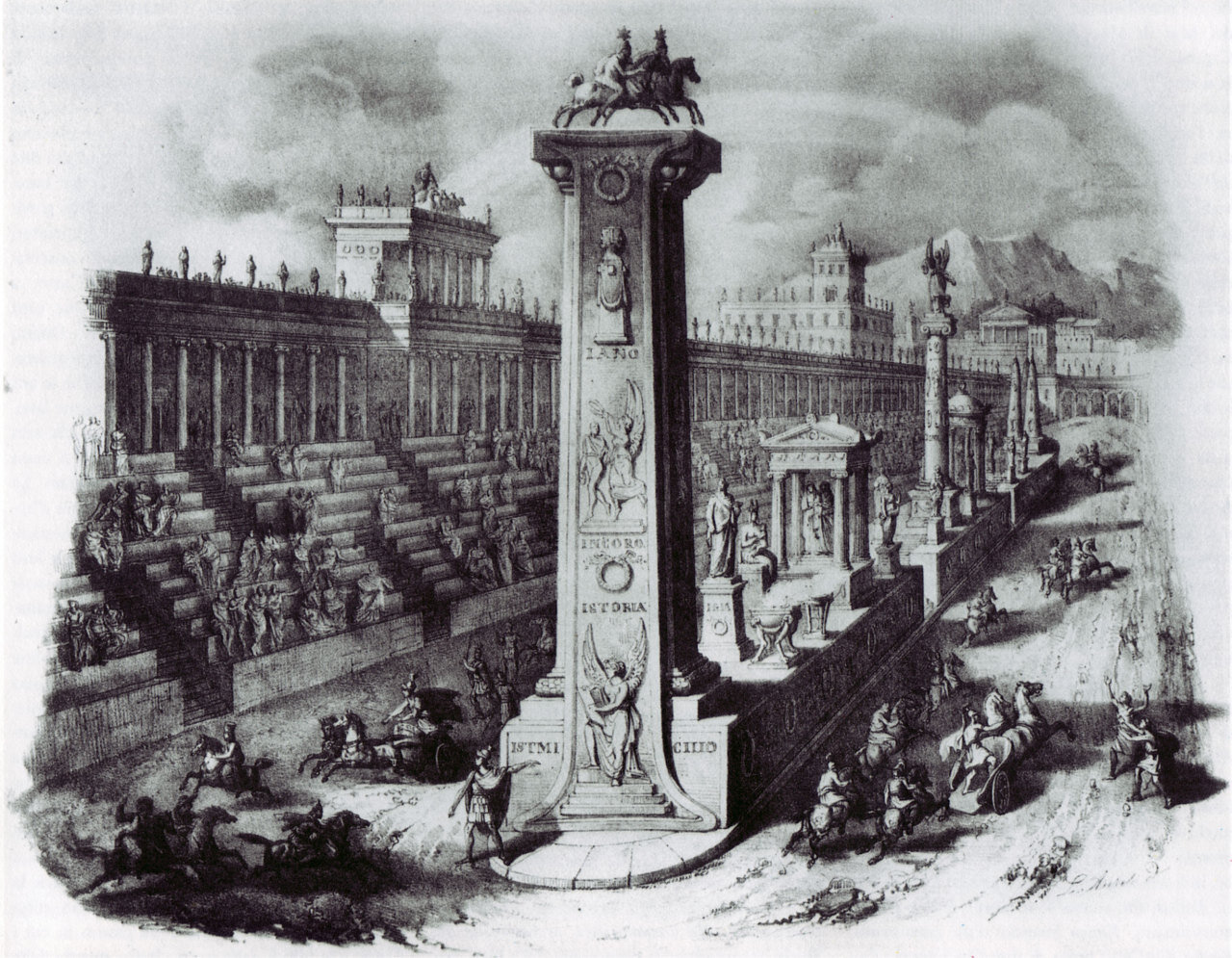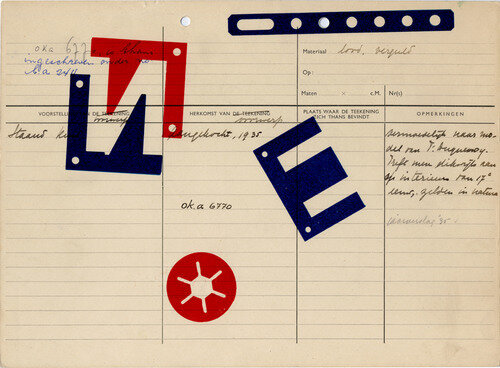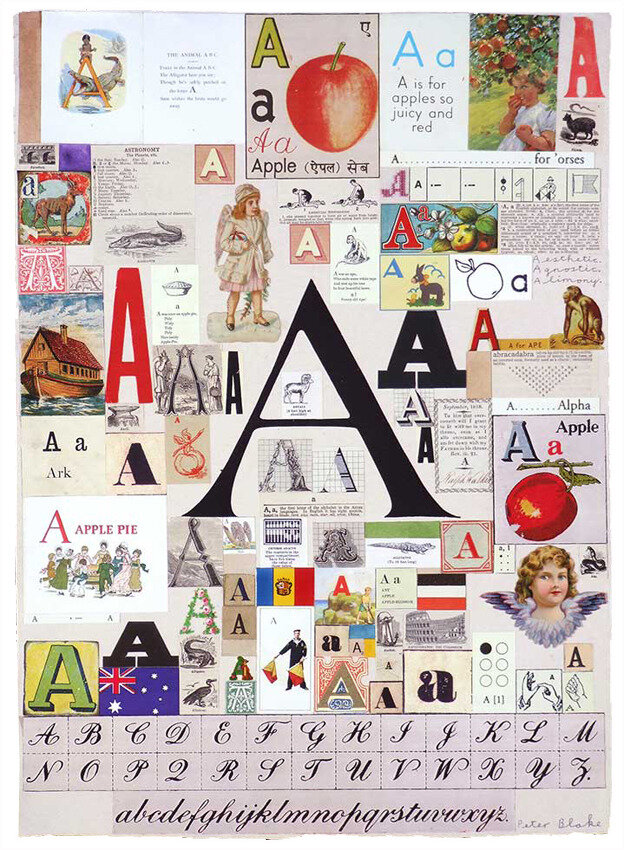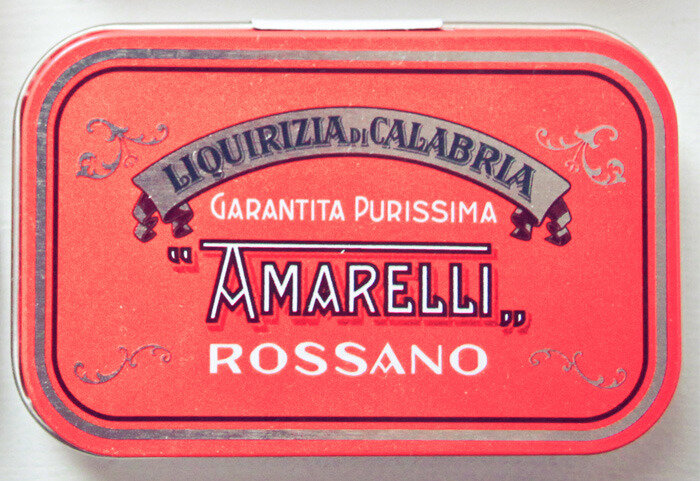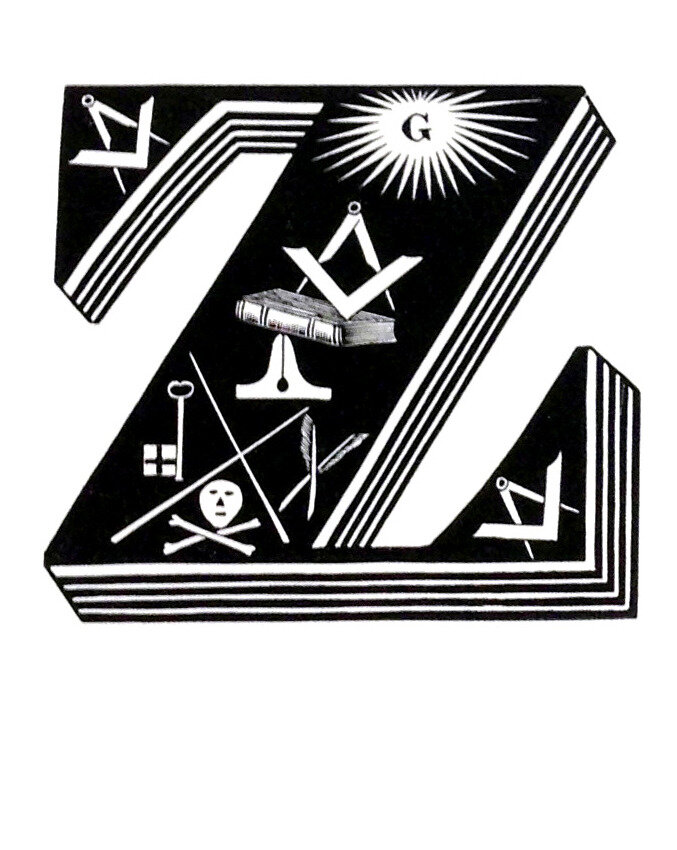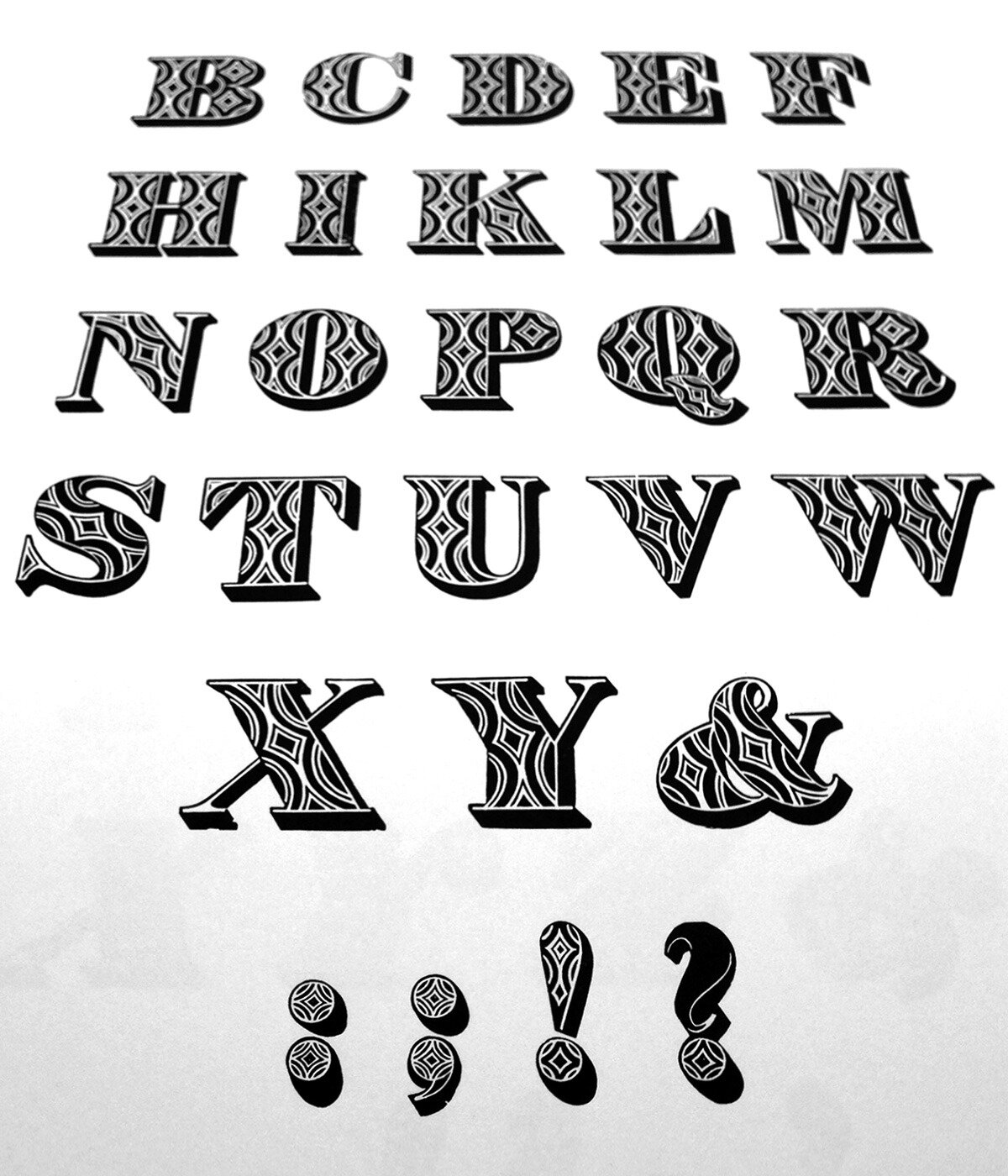“Here’s The Smallest Reproducible Font of Caps In The World!”
Whoa, this is impressive. Legendary. We’ve heard tell of such a matrix from some retired local line casters, but to see it up close and personal is quite impressive. A cap alphabet in the space of a 6pt em space (roughly). This mat was created and distributed as a promotional piece used to demonstrate the level of quality that Linotype’s “typographic laboratory of the world” was capable of.
We recently ran it through our machine and cast a couple slugs. Sure enough, as advertised, it casts and prints.
Thanks to our neighbors at Lowell who gifted us this piece of Linotype history.
Aquatints
of typography letterings within the urban life made around 1850 with aquatint method by Antonio Basoli. He was an italian engraver, scenic designer, interior designer and painter living in Bologna. One of his most important references is the scenography in the theatre of rome and of yourse his works above. Enjoy them!
Typographische Monatsblätter ™
Cover Design Issue 1, 2, 3, 4, 5-6, 7, 10, 11, 12
André Gürtler
Bruno PfäffliCover Design Issue 8-9
Emil RuderTypeface
Univers
Typography | Kevin Cantrell
Found some very inspiring type for you all today, be sure to go over these with a fine toothed-comb. There is a lot we can learn from Mr. Cantrell, this guy’s portfolio is just mesmerizing.
Stamp verso of a photo, late 19th century. Cabinet card of B. Facchinelli, photographer in Cairo. Printed by Eisenschiml & Wachtl, Vienna. Part of Ken and Jenny Jacobson Orientalist Photography Collection. Hi to the thegetty
40 Hanbury Street, London
Sir Peter Blake, Alphabet, letter A, n.d. Source
In the 1950s, Blake began using ‘found letters’ or commercial lettering in his work, as well as printed materials such as comic strips and advertising texts, allying himself with sign painters, decorators, and commercial artists. Declaring himself a ‘pop’ artist, he joined the ranks of Lichtenstein, Rauschenberg and Rosenquist, in their provocation of the fine art establishment. He is famous for the cover of Sgt. Pepper’s Lonely hearts club band.
The Wiki Truth, Kyra van Ineveld (2012)
The Wiki Truth, is a series of five gigantic books. Each book is ‘one page’ of Wikipedia. With these series I want to show how information has changed. 50 Years ago, we had an encyclopedia in our closet, our source of information. There were no doubts, the written information was our truth. Nowadays the truth isn’t fixed anymore; it became transient. It’s the wisdom of the crowd. And an endless amount. I get lost in this forrest of information.
For making the books, I asked ‘Wikipedians’ what the most large articles were on Wikipedia. They gave me a top 100; and I decided to print the top five. I spend days with downloading, each article is about 3000 pages long. I printed those, on my home-printer, and finally made classic encyclopedias of it. On the bottom of the book you read the first sentence that was ever written in this article; and at the top of the book you see the article as it is now. You see the information being created, being changed, being criticized, and being deleted. It are not professors who write the information, but Missy_1987, TonyTheTiger and Anonymous225.
See also:
- The Iraq War: A History of Wikipedia Changelogs, James Bridle (2010)
- Wikipedia Printed, Rob Matthews (2009)
(via Jeroen van Loon)
Leone and Amarelli are Italian candy companies that have been around for centuries. Amarelli has been making licorice since the 16th century, and Leone has been making candy since 1857. These tins are re-prints of the originals and are just as exquisite.
The Giant Squid (life size)
Natural History Museum specimen collection (2010)
Sea Monsters series
Fresh squid ink on watercolour paper (9m x 1.5m)
Louis John Pouchée alphabets
Described as the most ambitious and most beautiful types created in wood in any period, these alphabets were once presumed lost in a fire in 1940 at Monotype’s London office.
Designed for eye-catching headlines or for highlighting a word in printed posters, some of these fat face and slab serif letters look as if they could have been designed in the 1920s, or even the 1950s, judging from their patterns. They were actually designed in the early 1820s, even earlier than the more familiar Victorian ornamented type.
The astonishingly intricate letter designs feature a variety of ornamental motifs; plant forms, agricultural, musical and even masonic symbols. The level of detail in these, once innovative engravings, is incredible.
The above images are from Ornamented types: twenty-three Alphabets, from the Foundry of Louis John Pouchée. It’s a limited edition boxed set of large, unbound, deckled edged, printed sheets available to view at the St. Bride Library, which also holds the original wood blocks used to print the edition.
Printing from the blocks in the mid-90s was a collaboration between James Mosley, the former Librarian at St. Brides, and Ian Mortimer, of I.M. Imprimit, who designed and printed the limited edition.
When printing started, the provenance of the blocks was still a mystery. James Mosley had shown a few printed examples of individual letters in the ‘60s, suggesting that they might be from Pouchée’s foundry. However it wasn’t until Ian and his team were two-thirds through printing the cryptic alphabets that their identity was confirmed. Mosley matched them to a specimen; Specimens of stereotype casting, from the foundry of L. I. Pouchée 1, which even quotes the prices charged for the types.
The printing of this historic record was an extraordinary feat. The blocks were originally designed to be stereo-typed—used as patterns for casting metal type—and were never intended for printing. Therefore the blocks were never squared-up or made type high. This, together with the fact that their surfaces had warped slightly over time, meant that no automation for inking or printing could be used.
Painstaking techniques were used for making ready and inking the blocks. Each had to be packed and adjusted on the press to achieve a good impression. To ensure that both the engraved detail reproduced crisply and that the solid areas remained fully opaque, different sized rollers were often used on the same block to apply different densities of ink. A large roller with a fine film of ink was used for the detail and a small roller with thicker coverage was used for black areas. The few splits and marks, which eventually helped confirm the identity of the blocks, have been left. The edition took almost four years to complete.
Describing the design and typography of the printed edition, Ian told me that it had been agreed with Mosley that the letters should be allowed to speak for themselves with no clever layout or fancy typography to distract from them. The edition has a self-effacing layout with no secondary colour. The display type, Caslon’s two-line English Egyptian, was especially cast from surviving matrices. Two hundred and ten box sets were printed and it was agreed that the original blocks should not to be printed from again for fifty years.
Four of Pouchée’s printed letters were later used under license for the Pulp album cover, We Love Life, by Peter Saville in 2001.
I’ve chosen just a small section here. I was especially taken with the masonic alphabet. The ‘Z’, shown above, I’m told features authentic symbols that mark Pouchée out as a serious mason. Note the incredible printed detail achieved on the book in the centre and also the ‘G’ referring to God at the top. (Some of the other masonic letters show the eye of God). It was a privilege to be able to browse through it.
1The specimen title, shows founder’s name with an ‘I’.
The original Pouchée alphabets are © St Bride Foundation and I.M. Imprimit and are used with permission and my thanks.
Thanks also to Bob Richardson of the St. Bride Library—who first showed me the alphabets—and Ian Mortimer of I.M. Imprimit for their time in answering questions and reviewing this post.
Irving Harper, graphic design for an ad, 1948. Via Herman Miller.
NUVOLE
by mazzottibooks.co.uk
-The Book Marauders




